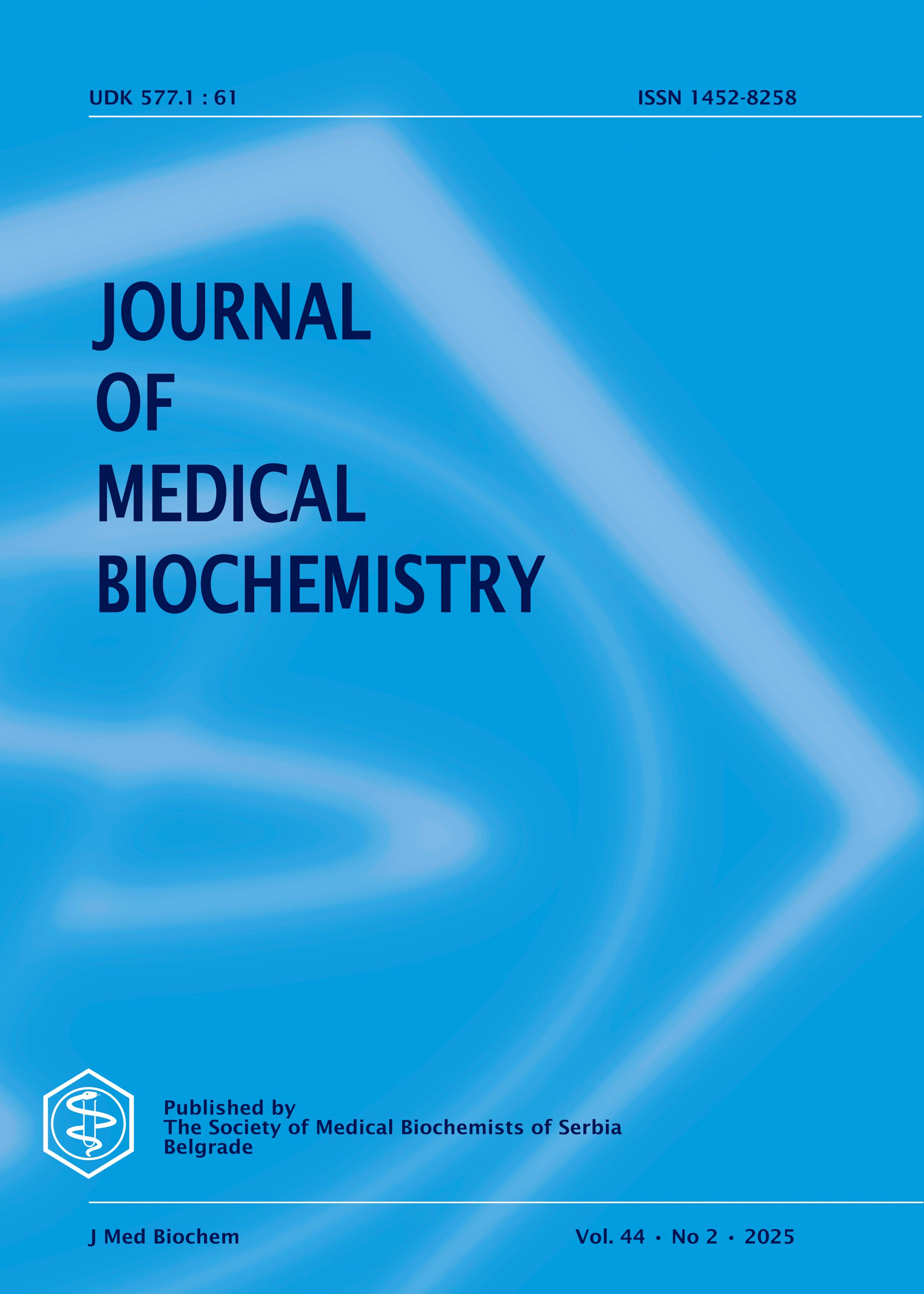ACE and chitotriosidase as possible predictive biomarkers for activity of sarcoidosis in correlation with PET/CT findings
Abstract
Sarcoidosis is a granulomatous disease which can afflict virtually any tissue in human body, most commonly the mediastinal lymph nodes and lungs. Pathohistological confirmation is the gold standard in establishing a diagnosis; however, determining the activity of the disease requires multiple clinical, radiographic and laboratory procedures. PET/CT scan is considered the gold standard for determining the presence of active granuloma, but has several significant limitations (radioactive material, cost, overall access to device). ACE and chitotriosidase are biomarkers used for diagnosis of sarcoidosis, and could have a place in determining the activity of the disease, when compared with the results of PET/CT scan. We have compared the levels of ACE and chitotriosidase with the levels of SUVmax values in patients with sarcoidosis. SUVmax and chitotriosidase level were significantly correlated both at the baseline and after the follow-up period, regardless of gender, age, duration of disease and radiography stage, while SUVmax and ACE level were not. Chitotriosidase had also shown a significant predictive ability of the decrease of the activity of sarcoidosis represented as the decrease of SUVmax as the effect of therapy in comparison with ACE. In the absence of ideal biomarker for sarcoidosis (high sensitivity, specificity and stability), chitotriosidase can be used in determining the activity of disease, as it had shown a significant correlation to the gold standard- PET/CT scan.
Copyright (c) 2024 Mihailo Sthepanovic, Zorica Sumarac, Draženka Grubač, Slobodan Belic, Nikola Marić, Natasa Djurdjevic, Aleksandar Sumarac, Jelena Jankovic, Snezana Jovicic

This work is licensed under a Creative Commons Attribution 4.0 International License.
The published articles will be distributed under the Creative Commons Attribution 4.0 International License (CC BY). It is allowed to copy and redistribute the material in any medium or format, and remix, transform, and build upon it for any purpose, even commercially, as long as appropriate credit is given to the original author(s), a link to the license is provided and it is indicated if changes were made. Users are required to provide full bibliographic description of the original publication (authors, article title, journal title, volume, issue, pages), as well as its DOI code. In electronic publishing, users are also required to link the content with both the original article published in Journal of Medical Biochemistry and the licence used.
Authors are able to enter into separate, additional contractual arrangements for the non-exclusive distribution of the journal's published version of the work (e.g., post it to an institutional repository or publish it in a book), with an acknowledgement of its initial publication in this journal.

